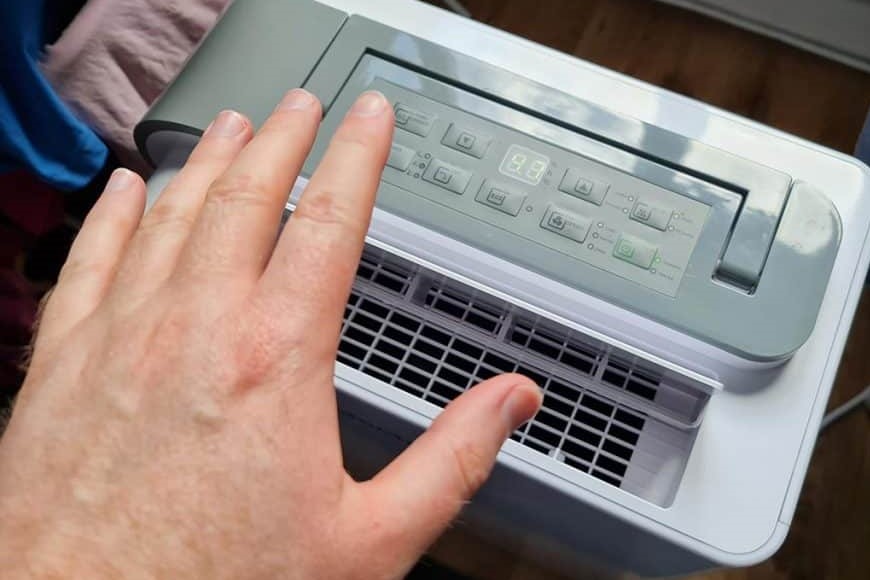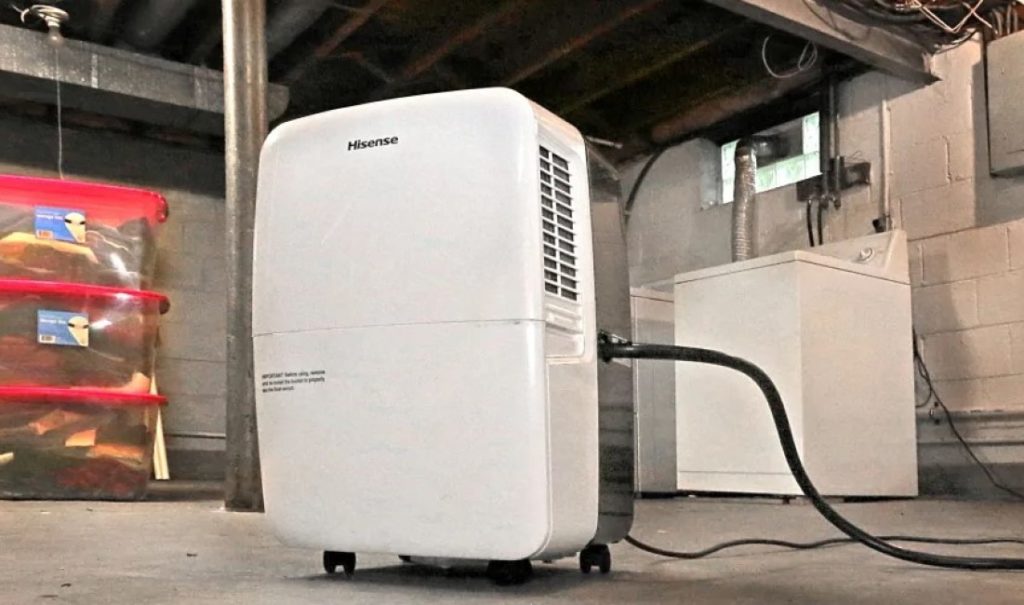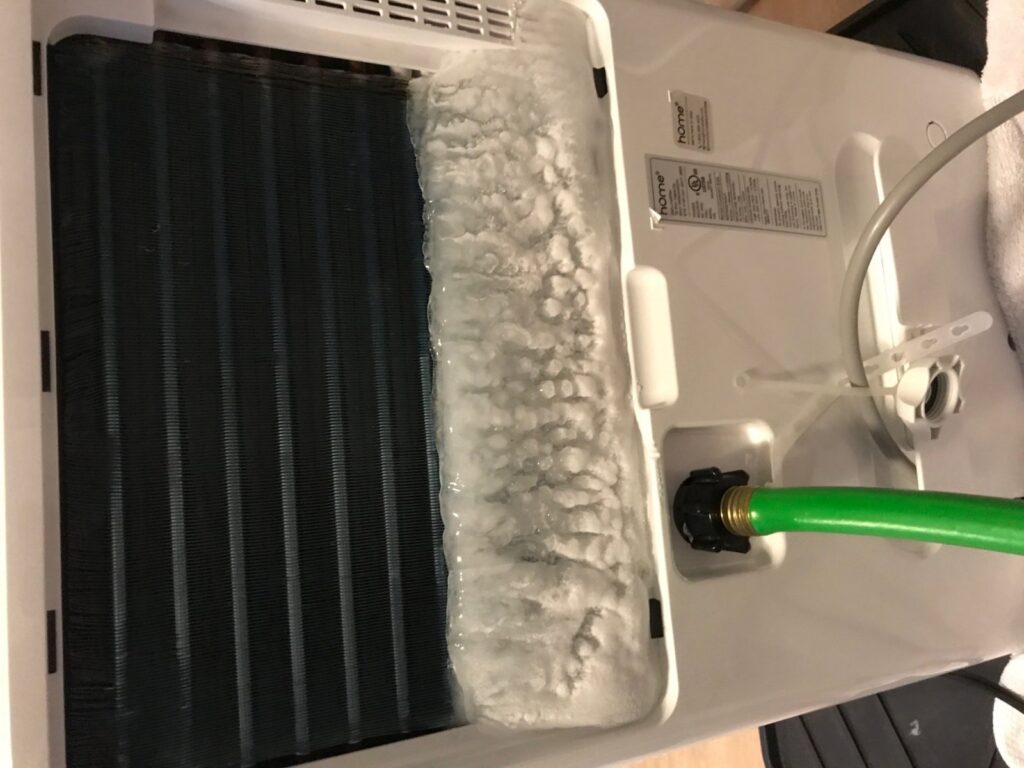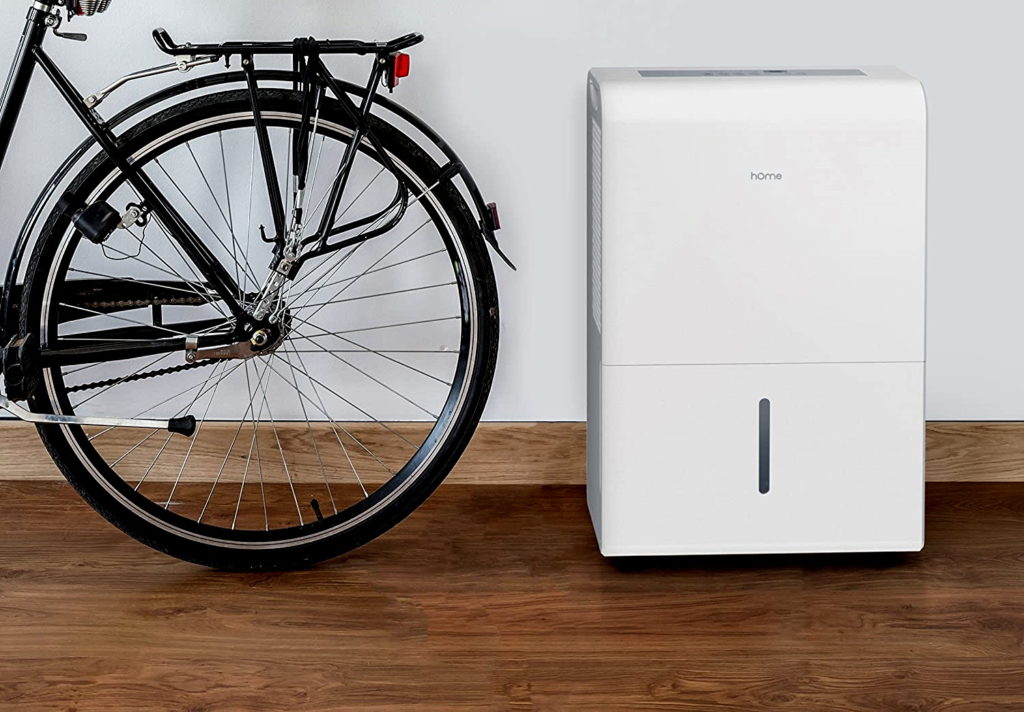

Dehumidifiers are devices designed to absorb and remove moisture from the air. They are useful in places like basements and closets. These condense the moisture in the air into water and then store it in a tank. The tank must be emptied periodically, which depends on the size of the dehumidifier.
However, a dehumidifier not working properly can be a headache. If you’ve just got one or you have one that is malfunctioning, you need to know the basic dehumidifiers troubleshooting tips.
Your dehumidifier may not turn on at all. It may stop collecting water. The coils may start freezing up suddenly. It could be a dehumidifier not working problem. The unit may be leaking, or in some, the fan may not be functioning. In some units, the noise level could rise.
There are also some brand-related problems, whether you have an LG, Hisense, Frigidaire, General Electric, or Danby dehumidifier. Whichever brand it is, we’re here to help you troubleshoot your dehumidifier problems.
Let us discuss all the possible issues you might come across with your dehumidifier:
Possible problem: Faulty plug or outlet
If the unit does not turn on at all, check the power at the outlet and make sure the unit is properly turned to the “On” position. Most models will not drop below 65 degrees F (18 degrees C). If the dehumidifier froze, the compressor will turn off automatically. Let the ice melt before emptying the tank and restart it.
Also, check the plug of your dehumidifier. Many times, you panic and you do not think that the appliance will not start due to a plug problem. If this is the problem just replace the old fuse or plug with a new one.
The problem may also be coming from its float switch, a device used in detecting the level of water Trusted Source Float switch - Wikipedia A float switch is a type of level sensor, a device used to detect the level of liquid within a tank. The switch may be used to control a pump, as an indicator, an alarm, or to control other devices. en.wikipedia.org in the tank. This is around the bucket and is designed to activate the device’s auto shut-off. This safety device prevents the appliance from overflowing. However, when it’s grilled, the compressor may not receive power and the circuits of the fan motor are interrupted. To rectify the problem, you have to position the bucket properly or empty it. Ensure the float moves freely, ensuring it is contacting the level switch as it should.
It is normal in hot and humid weather for dehumidifiers to collect water. This is the result of the dehumidification of the internal air of your residence. It is however not normal for a dehumidifier to leak from the front, back, or underside of its cabinet. This could indicate a problem with the filter, drainage system, or sealed system of your appliance no matter which one you use a 30-pint, 50-pint or any other.
Solving dehumidifier not collecting water problem
Check that the load of the device is not too powerful than the supply of the electricity system. Check if the filter is clogged. Take a look at the control settings on your machine. Also, check if all system components are working (compressor, compressor cooling fan, evaporator fan, etc.).
It’s either the compressor no longer runs or it runs and the cold coil (the pipes) does not become cold, so no condensation occurs and therefore no water.
If the compressor is no longer running, all the electrical connections must be checked.
Solving dehumidifier leaking water
If your dehumidifier is leaking water, it may be because the rubber plug on the bottom of the dehumidifier is not in place. The rubber stopper must be screwed on.
It could be because the water tank is full. Remember to empty and clean the water tank regularly.
If your dehumidifier has a water leak, it could be due to a faulty water tank. If the water tank is defective (cracks, breaks, etc.), it must be replaced so that the dehumidifier no longer leaks.
If the fan is not functioning, it could be that the motor is damaged or not working. So, cool air will not come out of the dehumidifier. The unit, however, can still work. You may have to change the motor. If the coils in the back constantly freeze up, try turning the unit off for an hour or relocating it to a higher setting to allow the room to warm up. You may also replace the blower wheel and for instance the Danby company is very helpful when solving such a problem.
You may ask yourself these questions to know the cause of the problem: Did you operate the appliance when it was colder than 16 ° C indoors? Did you operate the appliance when the humidity level was lower than 50% inside your home? These are the common causes. Thus, you could have the dehumidifier blowing cold air.
Condensation occurs when a cold surface comes into contact with warmer, more humid air. Some of the moisture in the air returns to its liquid state and collects on the cold surface.
The most common example of condensation from everyday life is the accumulation of water at the bottom of a glass of ice-cold soda. The cold surface of the glass touches the hot, humid air around it, and some of the moisture in the air collects on the outside of the glass.
Inside the dehumidifier is a condenser coil. All the heat is pulled from the condenser coil, which is very cold. As hot, humid air is pulled over the coil, some of its moisture condenses on the coil and drips into the hub. The air leaves the dehumidifier with less humidity than it had before.
Since the coil must be cooler than the air around it for condensation to occur, the dehumidifier will be at surprisingly high temperatures. EnergyStar claims that most residential dehumidifiers will start to freeze if the ambient temperature drops below 65 degrees Fahrenheit.
Dehumidifiers, designed to operate in temperatures as low as 42 degrees are available. If dehumidifier freezing is a regular problem for your home, you can invest in one of the models such as the Frigidaire 22-Pint Dehumidifier.
Dehumidifiers all have a motor fan, cooling fan, compressor, air circulating fan, and high and low-pressure piping, as well as sometimes a drain pump that can make strange noises that may or may not be normal.
Although an air humidifier is generally a quiet device, some people who are very sensitive to noise or vibration may want to keep the sound level of the device as low as possible.
Thus, for humidifiers placed on the floor, it may be advisable to place plastic or cork pellets (which can for example be cut from a stopper) under the feet of the appliance.
It’s very simple, and yet it can greatly improve the insulation of your device, especially if it is placed on sound-sensitive floors such as tiles or parquet.
However, if the problem is from within, that could be because the fan, the mounting brackets of the compressor, or the screws are loosened. Unplug the unit, disassembly and check the mentioned components and tighten loosened screws. If the problem continues, you may need to replace the compressor or the fan.
If you smell a musty odor, it is high time to change the filters. If you’ve left your dehumidifier with standing water for a few days, consider emptying and cleaning the tank as well. For this, use white vinegar. It is possible to limit the development of algae and bacteria at the bottom of the tank by placing an ionizer.
Here you will find a detailed information about some specific brands and their possible problems:
The Frigidaire company manufactures many large household appliances such as refrigerators, dishwashers, and stoves. The company also produces heating and cooling products, including air conditioners and dehumidifiers.
Troubleshooting a Frigidaire dehumidifier can be helpful if you are experiencing problems with the unit and need help finding a solution. Some frigidaire dehumidifier problems and troubleshooting tips are below:
Too much humidity in a home or apartment can cause a variety of problems, from damaging books and papers to degrading wood. Using an LG dehumidifier can lessen problems and make your home a more pleasant place to be. To make sure your LG dehumidifier is doing its job properly, you should learn some basic LG dehumidifiers troubleshooting tricks.
DeLonghi is a company that manufactures small appliances such as coffee and espresso makers, food processors, irons, and dehumidifiers. You may troubleshoot a Delonghi dehumidifier thus:
If the unit is running constantly but there is no water in the tank, try reducing the temperature control. If this persists, there may be a problem with the cooling system. You may need to remove the filter and clean it. When the water tank is full, the unit will shut down and will not operate until the tank is empty. The dehumidifier is turned off by a safety switch on the back of the unit. If the switch isn’t working properly, you can try turning it on manually by pressing the button or slightly bending the switch.
As you can see, a dehumidifier could be malfunctioning for many reasons. While you can make minor dehumidifiers troubleshooting, unless you are licensed and qualified, do not attempt to repair a dehumidifier yourself.





